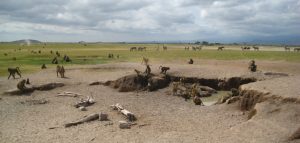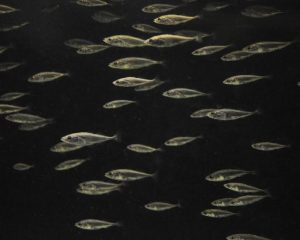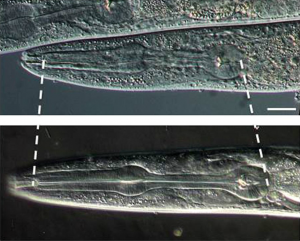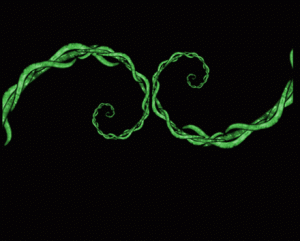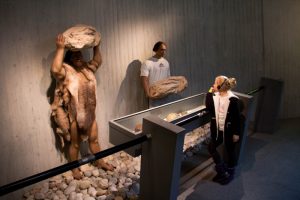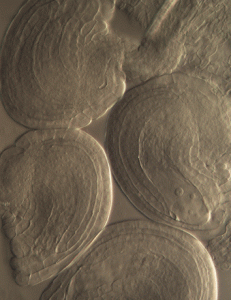Enter your address to receive notifications about new posts to your email.
Science & Publishing
-
Science & Publishing
Two-faced protein both speeds and slows cell cycle
Although some proteins have a single career, many—like Dis3—lead a double life. In the yeast Schizosaccharomyces pombe, loss-of-function mutations in dis3 cause defects in mitosis, implying that Dis3 normally supports cell cycle progression. But perplexingly, results in humans suggest that Dis3 normally slows cell cycle progression: mutations that partially disable dis3 contribute to the development…
-
Science & Publishing
‘Omics’ data improves breast cancer survival prediction
Precise predictions of whether a tumor is likely to spread would help clinicians and patients choose the best course of treatment. But current methods fall short of the precision needed. New research in this month’s issue of GENETICS reveals that profiling primary tumor samples using genomic technologies can improve the accuracy of breast cancer survival predictions…
-
Science & Publishing
Learning & Doing: GSA Awardee Bill Wood interview in GENETICS
So much is easily accessible on the internet now, there’s no need to pack students’ heads with information; what’s important is that we teach students how to learn on their own. —William B. Wood Bill Wood has been a pioneer in the reform of science teaching. Along with his many scientific accomplishments, Wood’s leadership has been…
-
Science & Publishing
Selfish self-fertilization hampers adaptation
When finding a mate is difficult, self-fertilization offers a tempting solution by increasing the number of offspring an individual can produce. But although “selfing” provides a stopgap solution when mates are scarce, it is frequently an evolutionary dead end; when environmental conditions change, species with high selfing rates seem prone to extinction. In an article…
-
Science & Publishing
How bacteria dodge new antibiotic candidates
Antibiotics, a vital tool for fighting infections, were originally products of nature—the first antibiotic was serendipitously discovered in mold contaminating a bacterial culture. As antibiotic resistance becomes an increasingly serious threat, scientists are attempting to wring another type of pathogen-fighting drug from the wild: antimicrobial peptides. Antimicrobial peptides, or AMPs, are found in almost every…
-
Science & Publishing
Fecal alchemy: Turning poop into genomics gold
When it comes to genotyping technology, poop genetics is stuck in the 1990s. While most geneticists are now awash in genome-scale data from thousands of individuals, those who depend on fecal and other non-invasively collected samples still rely on old-school, boutique panels of a dozen or so genetic markers. But feces — along with fur,…
-
Science & Publishing
Fish with robot friends: linking genes to behavior
The relative contributions of nature and nurture to behavior are a perennial source of dispute. That there is a genetic component is clear, but frustratingly, only a handful of specific genes are known to directly influence behavior in vertebrates. In the June issue of GENETICS, Greenwood et al. describe how they pinned down one of…
-
Science & Publishing
Stretchy cells underlie organ development
Animals’ complex body plans come at a cost: their development is elaborate and must be delicately controlled. One critical aspect of development is size and shape control—every organ needs to fit in its place. The process requires the orchestration of a dizzying number of pathways, and understanding even a single component is far from trivial.…
-
Science & Publishing
Jamborees of GENETICS Authors
By guest authors Robert K. Herman, Gabriela Huelgas-Morales, and David Greenstein This summer, GSA is throwing a genetics shindig–The Allied Genetics Conference (TAGC)–to bring geneticists from multiple disciplines together to promote interaction and cross-fertilization among fields. In a way, this meeting extends a current trend: GENETICS authors have been aggregating for some time. Those of us…
-
Science & Publishing
Inbred Neanderthals left humans a genetic burden
The Neanderthal genome included harmful mutations that made the hominids around 40% less reproductively fit than modern humans, according to estimates published in the latest issue of GENETICS. Non-African humans inherited some of this genetic burden when they interbred with Neanderthals, though much of it has been lost over time. The results suggest that these harmful…
-
Science & Publishing
June GENETICS Highlights
Check out the June issue of GENETICS by looking at the highlights or the full table of contents! This Month’s Centennial Articles Joshua Lederberg on bacterial recombination, pp. 613–614 Mark Johnston GENETICS Editor-in-Chief Mark Johnston introduces Joshua Lederberg’s GENETICS Classic Gene recombination and linked segregations in Escherichia coli, which describes the first genetic analysis of bacteria. Lederberg’s discovery that…


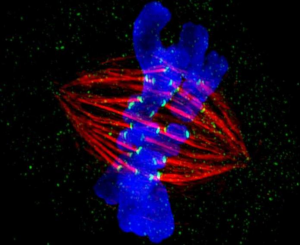

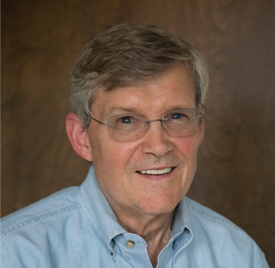
![Helonias bullata, a species threatened with extinction. Its low genetic diversity, a factor contributing to its decline, may have been caused by a high rate of self-fertilization. By Hedwig Storch (Own work) [CC BY-SA 3.0 (http://creativecommons.org/licenses/by-sa/3.0)], via Wikimedia Commons.](https://s43361.pcdn.co/wp-content/uploads/2016/07/1024_Helonias_bullata_Arktisch-alpiner_Garten_Chemnitz-0931-e1467579681557-300x197.jpg)
![Molecular model of penicillin, the first antibiotic discovered. Later, antimicrobial peptides were also found to have antibiotic properties. By Science Museum London / Science and Society Picture Library [CC BY-SA 2.0 (http://creativecommons.org/licenses/by-sa/2.0)], via Wikimedia Commons.](https://s43361.pcdn.co/wp-content/uploads/2016/06/Molecular_model_of_Penicillin_by_Dorothy_Hodgkin_9663803982-300x212.jpg)
